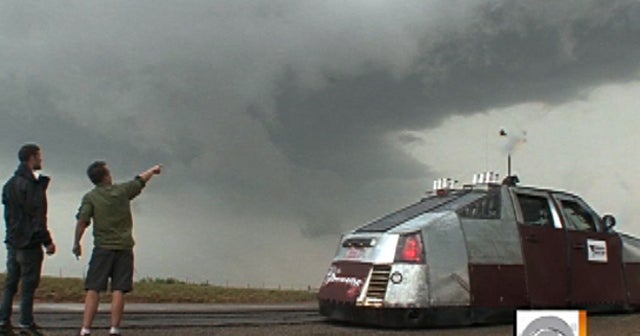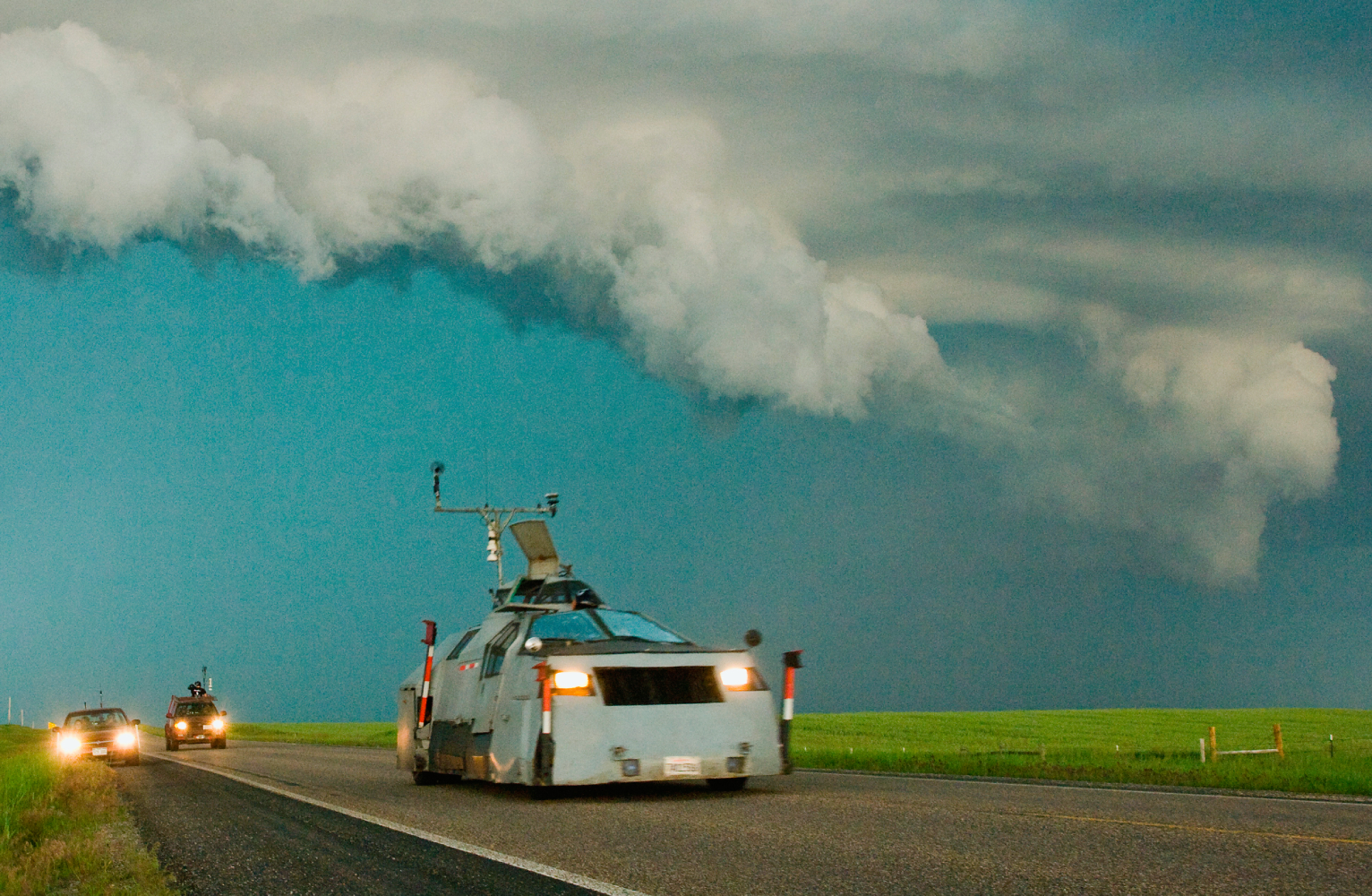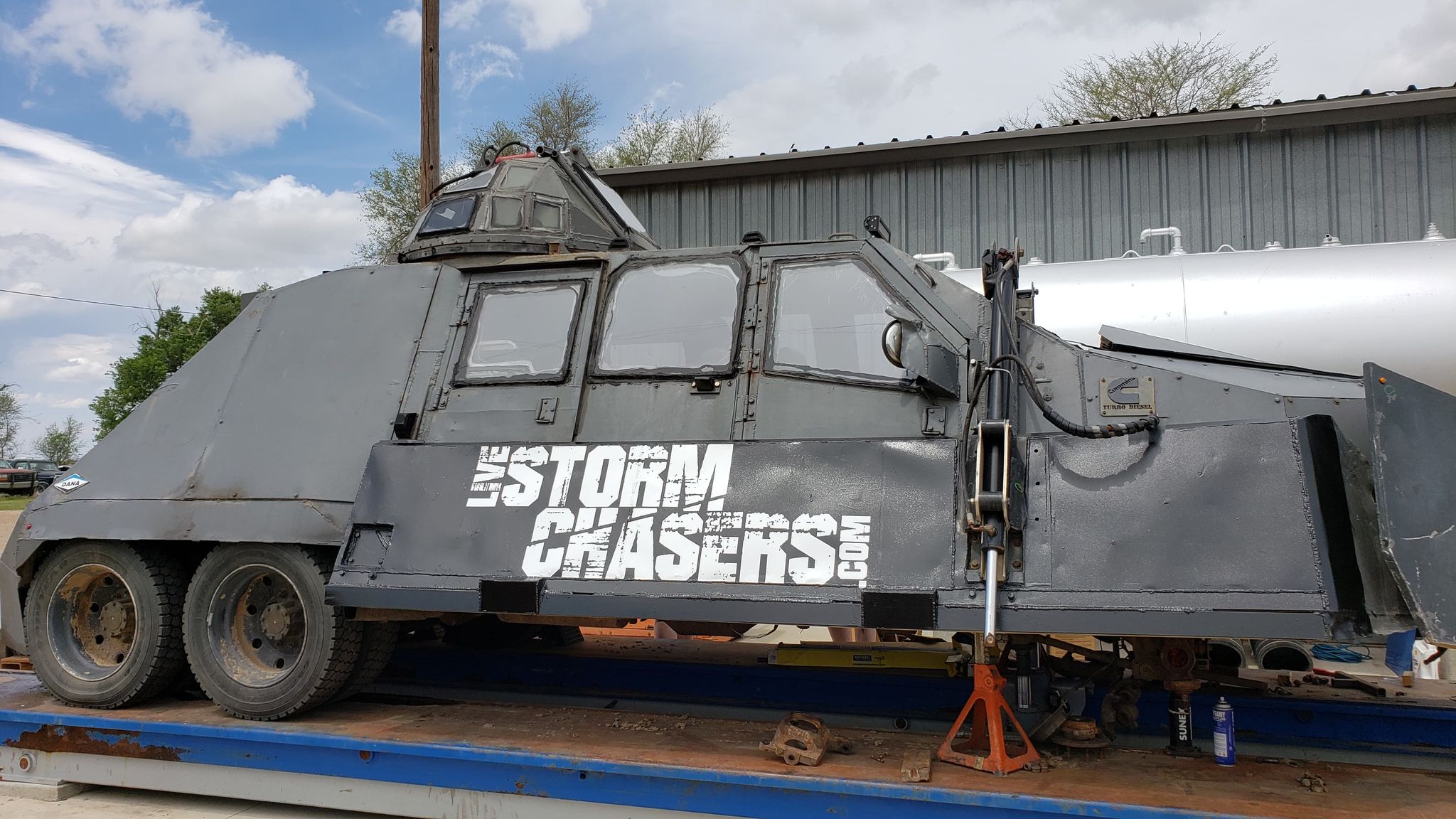What radar do storm chasers use? You’d think they’d have some fancy, top-secret technology, right? Well, maybe not top-secret, but it’s definitely high-tech. Storm chasers aren’t just thrill-seekers, they’re scientists in disguise, using powerful radar systems to track the most intense weather events on Earth.
Imagine them, cruising through the heart of a tornado, dodging hail the size of grapefruits, all while trying to get the perfect shot of a lightning strike. It’s not as glamorous as it sounds, but it’s certainly exciting! These brave souls rely on radar to keep them safe and to understand the mysteries of the weather.
So, what kind of radar are we talking about? There are a few different types, each with its own unique strengths and weaknesses. One of the most common is Doppler radar, which can detect the speed and direction of precipitation.
This is crucial for identifying rotating storms, which can spawn tornadoes. Then there’s dual-polarization radar, which can tell us the shape and size of precipitation, helping us distinguish between rain, hail, and snow. And let’s not forget about mobile radar systems, which are mounted on vehicles and provide storm chasers with real-time data.
It’s like having a mini-weather station on wheels!
Types of Radar Used by Storm Chasers

Storm chasers rely on various types of radar technology to track and analyze severe weather events, providing valuable insights into storm structure, intensity, and potential hazards. The most commonly employed radar systems are Doppler radar, dual-polarization radar, and mobile radar systems.
Doppler Radar
Doppler radar is the fundamental tool used by storm chasers to detect and track severe weather. It utilizes the Doppler effect, a phenomenon where the frequency of waves changes as the source of the waves moves towards or away from the observer.
This principle is applied to radio waves emitted by the radar, which are reflected back by precipitation particles like rain, hail, or snow.By analyzing the shift in frequency of the reflected waves, Doppler radar can determine the speed and direction of the precipitation particles, providing valuable information about the movement and intensity of storms.
This information is crucial for predicting storm paths, identifying areas of strong winds, and understanding the potential for tornadoes.
Doppler radar is particularly useful for detecting rotation within storms, which is a key indicator of the potential for tornado formation.
Dual-Polarization Radar
Dual-polarization radar, an advanced type of Doppler radar, transmits and receives radio waves with two different polarizations—horizontal and vertical. This dual-polarization capability allows the radar to gather more detailed information about the shape and composition of precipitation particles.By analyzing the difference in reflectivity between the two polarizations, dual-polarization radar can differentiate between different types of precipitation, such as rain, hail, and snow.
This information is particularly useful for identifying the presence of large hail, which poses a significant hazard to life and property.
Dual-polarization radar also helps in detecting the presence of strong updrafts and downdrafts within storms, which are associated with severe weather phenomena like tornadoes and heavy rainfall.
Storm chasers rely on Doppler radar to track the development and movement of severe weather, providing vital information for safety. But while chasers are focused on the skies, it’s interesting to consider what happens on the ground. Have you ever wondered what do cows do when a storm is coming ?
They might huddle together for protection, or seek shelter under trees. Back to the radar, the data it provides helps storm chasers understand the intensity, rotation, and potential hazards associated with a storm, enabling them to make informed decisions and stay safe.
Mobile Radar Systems
Mobile radar systems are compact and portable versions of Doppler radar, allowing storm chasers to gather real-time data while chasing storms. These systems are typically mounted on vehicles and provide a localized view of the storm’s structure and movement.Mobile radar systems are particularly valuable for close-up observations of storm dynamics, especially in areas where traditional radar coverage is limited.
They provide a more detailed and immediate understanding of storm evolution, allowing chasers to make informed decisions about their position and safety.
Mobile radar systems are often equipped with additional sensors, such as lightning detectors and temperature probes, providing a comprehensive view of the storm environment.
Radar Data Interpretation

Storm chasers rely heavily on radar data to understand and predict the behavior of severe weather events. They use this information to identify potential hazards, track storm movement, and make informed decisions about their safety and the safety of others.
Radar data provides a wealth of information about the internal structure and dynamics of storms, allowing chasers to assess the intensity, rotation, and potential for severe weather.
Interpreting Radar Reflectivity
Radar reflectivity measures the intensity of the echoes returned by precipitation particles, providing a picture of the storm’s structure and intensity. Higher reflectivity values indicate heavier precipitation, which can be associated with stronger updrafts and downdrafts, suggesting the potential for severe weather.
For example, a reflectivity value of 60 dBZ (decibels relative to a Z-scale) corresponds to heavy rain or hail, while a value of 70 dBZ or higher suggests the possibility of very large hail or intense thunderstorms.
Mobile Radar Systems

Storm chasers often utilize mobile radar systems, which provide a more localized and real-time view of weather conditions. These portable radar units offer flexibility and the ability to gather data directly from the field, enhancing their ability to track and predict storm behavior.
Advantages and Disadvantages of Mobile Radar Systems, What radar do storm chasers use
Mobile radar systems offer distinct advantages and disadvantages that storm chasers must consider when deploying them. The portability of these units allows for a direct and immediate assessment of storm activity, enhancing the understanding of storm evolution and intensity. The ability to gather data from various locations provides valuable insights into the internal structure and dynamics of storms.
However, mobile radar systems have limitations, such as their relatively shorter range compared to fixed radar networks. They may also be susceptible to interference from surrounding terrain or other weather phenomena, impacting data accuracy.
Features and Specifications of Popular Mobile Radar Units
The table below showcases the features and specifications of popular mobile radar units employed by storm chasers. These units offer varying capabilities in terms of range, accuracy, and data display, catering to different needs and budgets.| Mobile Radar Unit | Range (km) | Accuracy | Data Display ||—|—|—|—|| [Mobile Radar Unit Name]| [Range] | [Accuracy] | [Data Display Capabilities] || [Mobile Radar Unit Name]| [Range] | [Accuracy] | [Data Display Capabilities] || [Mobile Radar Unit Name]| [Range] | [Accuracy] | [Data Display Capabilities] |
Integration of Mobile Radar Data with Other Weather Information Sources
Integrating mobile radar data with other weather information sources, such as satellite imagery, surface weather observations, and numerical weather models, significantly enhances the overall understanding of storm dynamics. Combining these data sources provides a comprehensive picture of the atmospheric environment, enabling more accurate storm prediction and forecasting.
Integrating mobile radar data with other weather information sources, such as satellite imagery, surface weather observations, and numerical weather models, significantly enhances the overall understanding of storm dynamics. Combining these data sources provides a comprehensive picture of the atmospheric environment, enabling more accurate storm prediction and forecasting.
For instance, storm chasers can correlate mobile radar data with satellite imagery to assess the overall size and structure of a storm system. Integrating mobile radar data with surface weather observations provides real-time information about wind speed, precipitation, and temperature, aiding in the analysis of storm intensity and potential hazards.
By combining mobile radar data with numerical weather models, storm chasers can gain insights into the predicted path and evolution of a storm system, enabling them to make more informed decisions about their safety and data collection strategies.
Radar Safety Considerations

Storm chasers rely heavily on radar systems to track and predict severe weather events. However, operating radar equipment in extreme weather conditions presents unique safety challenges. This section Artikels essential safety precautions storm chasers must take to ensure their well-being and the integrity of their radar systems.
Safety Precautions During Severe Weather
Storm chasers must prioritize safety when operating radar systems during severe weather. This involves understanding the potential hazards associated with the weather event and taking appropriate precautions.
- Seek Shelter:When encountering a severe storm, it is crucial to seek shelter immediately. Radar systems, despite their valuable information, cannot protect against the dangers of tornadoes, hail, or strong winds. Sheltering in a sturdy building or underground is the safest course of action.
- Stay Informed:Continuously monitor weather forecasts and warnings from reliable sources. These sources provide real-time updates on storm intensity, movement, and potential hazards, allowing storm chasers to make informed decisions regarding their safety.
- Maintain Distance:Avoid driving directly into or near the core of a severe storm. Maintaining a safe distance from the storm’s center minimizes the risk of encountering high winds, heavy rain, and potential debris.
- Be Aware of Flash Flooding:Flash flooding is a significant danger associated with severe storms. Avoid driving through flooded areas, as water depth and currents can be deceiving and dangerous.
Radar Equipment Maintenance
Maintaining the proper functionality of radar equipment is crucial for accurate data collection and storm tracking.
- Regular Inspections:Conduct regular inspections of the radar system, checking for any damage or malfunctions. This includes inspecting the antenna, power supply, and data transmission components.
- Calibration:Calibrate the radar system regularly to ensure accurate readings. Calibration involves adjusting the system’s settings to match known targets and ensure data accuracy.
- Environmental Protection:Protect the radar system from harsh weather conditions. This may involve using protective covers, storing the equipment in a secure location, and avoiding exposure to excessive moisture or dust.
- Spare Parts:Carry spare parts and tools for common repairs. This ensures that any minor issues can be addressed promptly, minimizing downtime during critical weather events.
Potential Hazards of Radar Use in Extreme Weather
Using radar systems in extreme weather environments can present various hazards.
- Electromagnetic Interference:Severe storms can generate strong electromagnetic fields that can interfere with radar signals, leading to inaccurate data readings. Storm chasers should be aware of these potential interferences and take steps to mitigate their impact.
- Lightning Strikes:Radar antennas are susceptible to lightning strikes, which can damage the equipment and pose a safety risk. Use lightning protection devices and follow safety guidelines during thunderstorms.
- Strong Winds:High winds can damage or dislodge radar antennas, compromising data collection. Secure the antenna properly and avoid operating the radar in extremely windy conditions.
- Extreme Temperatures:Extreme temperatures can affect the performance of electronic components within the radar system. Ensure the equipment is operating within its specified temperature range.
Radar Technology Advancements

The pursuit of more accurate and timely storm data has driven significant advancements in radar technology, equipping storm chasers with powerful tools for understanding and predicting severe weather events. These innovations are not only enhancing storm chasing capabilities but also contributing to a deeper understanding of atmospheric phenomena and improving public safety.
Dual-Polarization Radar
Dual-polarization radar technology, a recent breakthrough in meteorological radar, is revolutionizing storm chasing. This technology transmits and receives radar signals on both horizontal and vertical polarizations, allowing for more detailed information about the size, shape, and composition of precipitation particles.
This information is crucial for differentiating between hail, rain, and snow, providing storm chasers with a more accurate picture of the storm’s structure and intensity.
- By analyzing the difference in signal strength between horizontal and vertical polarizations, dual-polarization radar can differentiate between large hailstones and smaller rain drops, enabling storm chasers to anticipate potential hazards more effectively.
- The technology can also identify the presence of tornadoes by detecting the presence of debris in the air, providing an early warning system for these dangerous storms.
Mobile Radar Systems
Mobile radar systems, deployed on vehicles or drones, offer storm chasers unparalleled flexibility and accessibility to storm data. These systems allow for close-up, real-time observations of storm dynamics, providing insights that are not available from traditional ground-based radar stations.
- Mobile radar systems, equipped with advanced processing capabilities, can analyze data on the fly, providing storm chasers with immediate insights into storm evolution and potential hazards.
- These systems can also be used to map the distribution of precipitation within a storm, enabling storm chasers to navigate safely through dangerous areas.
Phased Array Radar
Phased array radar technology, characterized by its ability to electronically steer radar beams without physically moving the antenna, is emerging as a game-changer in storm chasing. This technology offers several advantages over traditional radar systems, including:
- Faster scanning speeds, enabling more frequent updates on storm dynamics and providing a more comprehensive picture of storm evolution.
- Enhanced resolution, allowing for the detection of smaller precipitation particles and providing more detailed information about storm structure.
- Increased flexibility, enabling the radar to focus on specific areas of interest within a storm, providing more targeted insights.
Q&A: What Radar Do Storm Chasers Use
What is the difference between Doppler radar and dual-polarization radar?
Doppler radar measures the speed and direction of precipitation, while dual-polarization radar measures the shape and size of precipitation. Think of it like this: Doppler radar tells you how fast the rain is falling, while dual-polarization radar tells you if it’s a gentle drizzle or a hail storm.
How do storm chasers use mobile radar systems?
Mobile radar systems are mounted on vehicles and allow storm chasers to track weather events in real-time. They can use this data to navigate through storms and to identify potential hazards. It’s like having a mini-weather station on wheels!
What are some of the safety considerations for storm chasers using radar?
Storm chasers need to be aware of the potential hazards associated with using radar in severe weather conditions. They need to make sure their equipment is properly maintained and that they are aware of their surroundings. They also need to be prepared for unexpected changes in the weather.
What are some of the emerging radar technologies that are improving storm chasing capabilities?
New radar technologies are being developed all the time that are improving the accuracy and resolution of radar data. This is helping storm chasers to better understand the weather and to make more informed decisions. For example, some new radar systems are able to detect the size and shape of hail stones, which can help storm chasers to avoid dangerous areas.